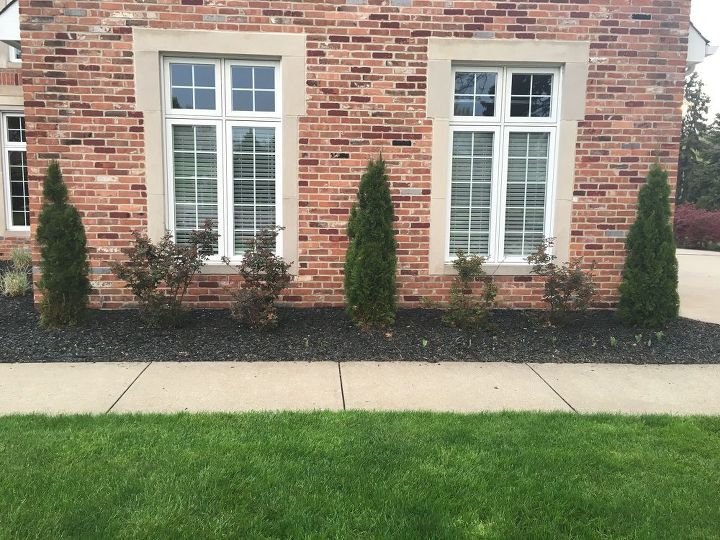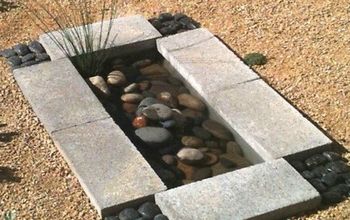Perennial plants/shrubs are best in New England for west facing homes?
-
Many perennials are happy with an exuberant amount of sun as long as they get enough water. Among the first that I would think of would be gaillardia, coreopsis, dianthus, asters, daylilies, phlox, goldenrod and sedums. Roses love full sun. If you look at this list of drought-tolerant plants from the University of New Hampshire, most of them will be happy with as much sun as you can give them: http://extension.unh.edu/resources/files/Resource000520_Rep542.pdf
 Douglas Hunt
on Jul 28, 2014
Helpful Reply
Douglas Hunt
on Jul 28, 2014
Helpful Reply- See 1 previous
-
-
How big do you want them to get? You can find winter hardy (even in very cold areas) plants that are all the way from little alpine types to BIG shrubs. Colors? Time of bloom preferred? Scented? Lots of plants to choose from but more info would be helpful.
 Dorothy
on Jul 28, 2014
Helpful Reply
Dorothy
on Jul 28, 2014
Helpful Reply -
-
Depending on your soil type (have it checked at the agricultural extension service in your county) things like azaleas could do well and come in all kinds of colors and sizes....from white to deep red with some blooming earlier than others. Things like butterfly bush, coryopteris, wigelia, barberry, viburnums (tons of varieties), Russian sage etc are fairly low maintenance, colorful, cold tolerant and some are positively xeric in their water needs. One of my favorite combos is Russian sage, Shasta daisies and a really deep rusty red day lily. Rudbeckia, ornamental mums, asters are others also with lots of color later in summer/into fall. Echinacea is now available in both standard and dwarf sizes and a lot of different colors from the original pinky mauve....all the way to "tomato soup" and some rich oranges. I like to use white to highlight colors. Among blues are the lavenders, butterfly bushes, scabiosa, asters, possibly hydrangea, clematis (white, pink, purples). Even though you are in the east getting a copy of Sunset's Western Garden book can still give you a ton of info on plants from ground covers to trees...match your zones and you should be able to grow most of what is in there for the corresponding climate.
 Dorothy
on Jul 29, 2014
Helpful Reply
Dorothy
on Jul 29, 2014
Helpful Reply -
-
You can start the spring with bulbs too.....like grape hyacinths and scilla and snowdrops.....along with the usual daffodils, tulips and hyacinths. Summer bulbs could include various lilies.....oriental, Asiatic, native....they just get better and better. Also alliums (ornamental onions) from white through pink to deep mauve to purples and short to tall....lots of fun and most of these will naturalize. I like to add some food plants in among my flowers.....asparagus makes lovely ferny growth, dill and fennel are great, rhubarb makes BIG leaves, Swiss chard (the varieties with the colorful stems), spinach, lettuces (for early season color), parsley, carrots left in the ground will bloom with pretty umbrel of flowers.
 Dorothy
on Jul 29, 2014
Helpful Reply
Dorothy
on Jul 29, 2014
Helpful Reply -
Related Discussions
GNATS - How to get rid of them?
Somehow my house and garden got tiny gnats that killed my fuchsia plant and fly everywhere. I have tried ALL the Web recommendations - soap and oil dishes, sand in th... See more
Marigolds growing! Should I pinch the buds?
My marigold plants are growing. I heard that pinching the buds until Autumn will allow them to grow without killing the plant. Is this true?
Growing garlic
Growing our first garlic, should we wait until the leaves are drying out before we pick it? Husband picked first one today along with our first potatoes.
How to keep mice out of your garden?
Hi everyone, I have mice in my garden destroying my vegetables and I have also noticed them in the barn and shed. Please can someone tell me how to prevent them from ... See more
What's the best flower/plant to grow in Texas?
I know that opinions vary, but what's your opinion?!I have great luck w Rosemary plants. Green all year long.
Which annual flowers make a colorful border for my house?
This year I am going to plant a colorful border using annuals. What annuals have you used or do you recommend for a border? The area is full to part sun. I am not ... See more
Is it safe to replant peony?
I've heard it might be tricky. Is it true? What is the best way to that? It's this year's plant. No flowers yet.




